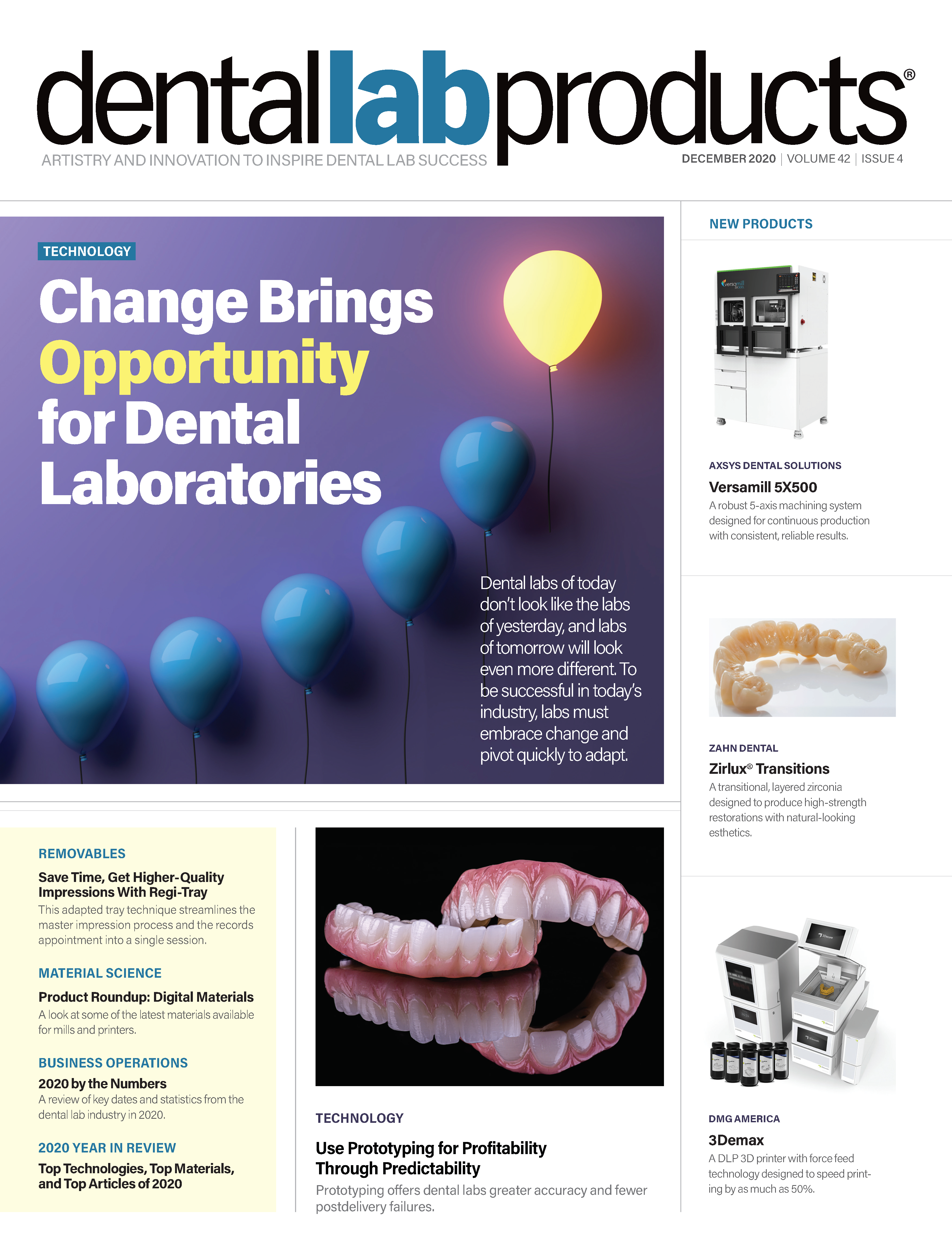I’ve owned a lab and fabricated removable prosthetics for 34 years, and I realized early on that if I wanted to be successful, I was going to have to problem-solve to head off potential production-killing issues, maintain a quality benchmark, and meet clinical appointment schedules.
One issue that arises quite routinely is receiving impressions taken with stock trays with the instructions to treat the subsequent model as definitive (Figure 1). Most times these impressions produce models with inadequate flange extensions, tray compressions, or incomplete anatomy, interfering with our ability to fabricate a successfully retentive denture.
Accompanying this situation is the dread of making the call to the account to explain that I need to make a standard custom tray to capture a reasonable and customary imprint.
For this reason, I adapted a tray technique to encompass both the master impression process and the records appointment in 1 session, basically condensing 2 appointments into 1. I call this technique/product a regi-tray, the combining of both the bite registration and custom impression. By providing this modality, the request to reimpress without losing an appointment makes the whole situation much more palatable. It is also useful as a work-around when patients need to condense appointment sequences to make a personal deadline (wedding, graduation, reunion, etc).
Featured Materials
Materials Used/Mentioned in Article
- GC America Inc’s Coecal laboratory stone for models
- Keystone Industries’ baseplate and tray polystyrene
- Primotec USA’s Primobase light-cure baseplate material
- Gebdi Dental-Products’ baseplate and preformed ivory rim wax
Ever since I implemented this technique in my lab, it has become commonplace for many clients to send a stock tray impression with instructions to “fabricate that bite tray thing.” When clients make those requests, it fortifies in my mind that I have established a position astechnical partner.
The Technique
Outline tray extensions and spacer terminus on the preliminary model. This will guide your design (Figure 2).
Construct a spacer of wax or vacuum formable material/polystyrene that will not adhere to your tray material choice (Figure 3). I prefer a vacuum formable material due to the uniformity of thickness provided by the forming process.
Place tissue stop in the spacer in a pattern that will provide support uniformly. Use tuberosities and anatomy known to be supportive in construction of a standard custom tray. I prefer circular stops as opposed to square because they are less apt to dig into tissue and produce a compression spot, as square angles do (Figure 3).
Adapt your tray material of choice over the spacer. I use Primobase from Primotec USA. Make sure to finger adapt the material into the spacer holes before adapting over the spacer to ensure the tissue stop hole is completely filled. Cure.
When adapting tray material, be sure to define the area between the tray and the spacer with finger adaption. Ideally, later, when the spacer is removed, you will have created a rim lock for the impression material to adhere to mechanically. This will aid the adhesive in preventing the impression material from pulling from the tray during the impression process (Figure 4).
Finish the baseplate/tray with carbides and stones of choice. No handle is needed, as we will add a wax rim to this tray.
Before adapting the rim, I prefer to attach “nail head” retention to the area where it will be placed. This will prevent the rim from coming loose during the impression/records process (Figures 5 and 6).
Adapt the rim using basic design measurements established for making a standard baseplate and rim (Figure 7). I prefer to use Gebdi Dental-Products’ Tribos preformed wax for the rim construction because it is firm and looks biologically better during rim trim when ivory is canvased against the lips (Figure 8a).
Polish wax rims, and remove the spacer before sending
(Figure 8b).
Regi-Trays are returned with impression and records ready for boxing and pouring using Wonderfill from Dental Creations, Ltd (Figure 9).
Border the molded master models and records in one appointment (Figures 10a and 10b).

